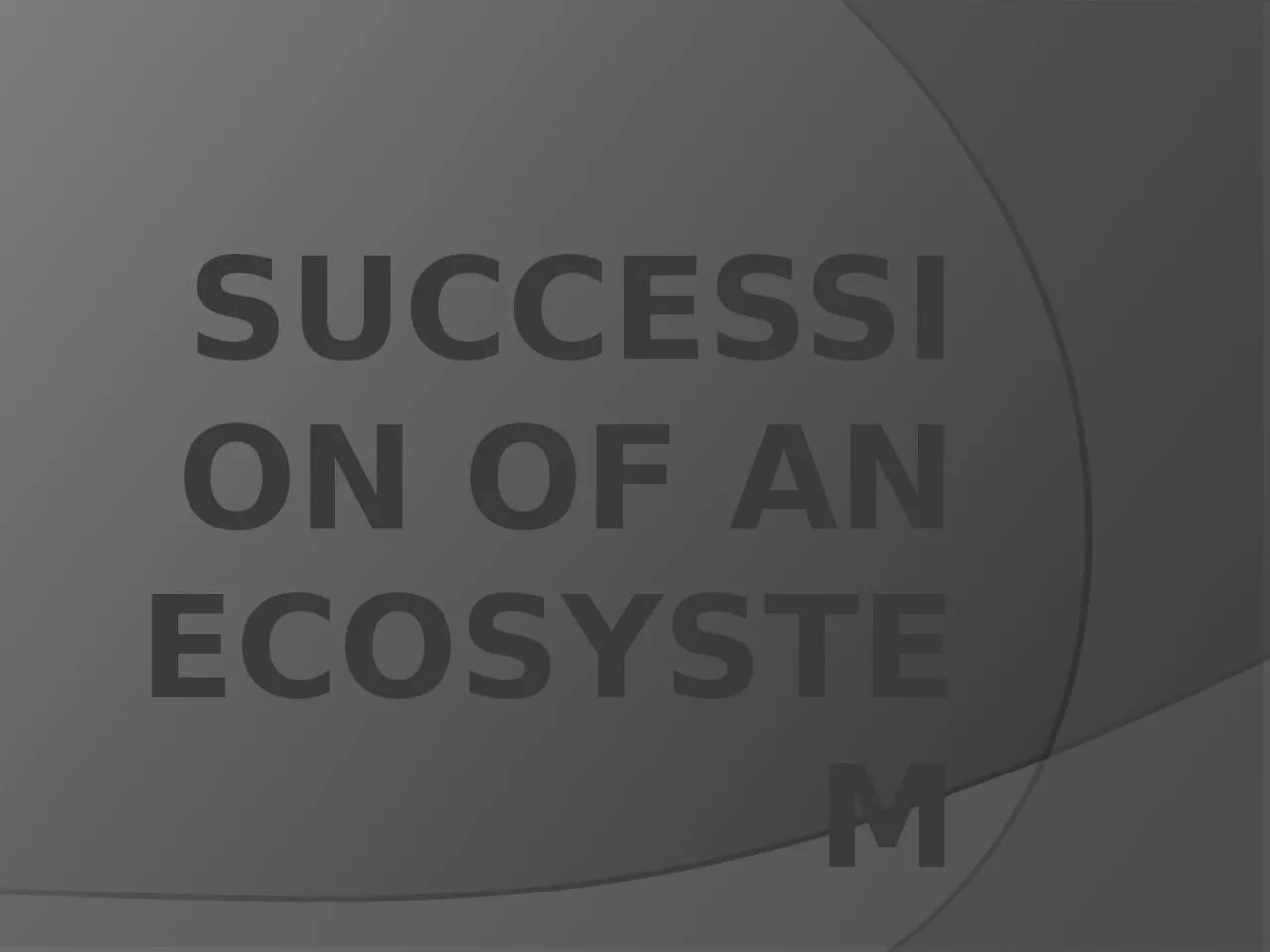

Succession Where the changing of species composition occurs over a period of time Two main types Primary succession starting from scratch Where there is no living organisms and soil formation is starting ID: 1026459
Download Presentation The PPT/PDF document "Succession of an Ecosystem" is the property of its rightful owner. Permission is granted to download and print the materials on this web site for personal, non-commercial use only, and to display it on your personal computer provided you do not modify the materials and that you retain all copyright notices contained in the materials. By downloading content from our website, you accept the terms of this agreement.
1. Succession of an Ecosystem
2. SuccessionWhere the changing of species composition occurs over a period of time.Two main types:Primary succession: starting from scratch. Where there is no living organisms, and soil formation is starting.Secondary succession: starting over. Where there is soil and previous organisms that will be brought by wind, or lay dormant until conditions are right to start growing again.
3.
4. Primary successionPrimary succession (Prisere): It starts with a lifeless abiotic area. Soil being deposited and the colonization of organisms slowly appearing.Succession goes through stages called seral stages. A sere is a set of communities that succeed one after the other. i.e.: Lithosere – bare rock to woodland community.Hydrosere – build up of vegetation in a lake/pond turning into a forest.Plagiosere – human activity stops a natural succession from occurring into climax or subclimax community.
5. Primary SuccessionTypes of Primary succession communities:New volcanic landRetreat of a glacierBuild up of vegetation from a deep pond or lake.Stages of succession:Bare/inorganic surface – lifeless abiotic environment, ready for soil deposits to form from wind sediment and erosion.Seral 1 (colonization) – first species to colonize (pioneer species) usually small in size, short life cycles, rapid growth and maturity with many offspring. Seral 2 (establishment) – Species diversity begins. New species move in either to prey or colonize. Invertebrates appear in soil. Humus (organic matter) increases in amount.
6. Primary SuccessionSeral 3 (competition) – climate continues to change with addition of new species. Larger plants appear and increase cover and shelter are provided for newer and more diverse species to inhabit area. Less temperature extremes.Seral 4 (Stabilization) – fewer new species, colonizers are established or slowing fading out of the area. More complex food webs are seen and more specialized niches are found. Larger less productive organism are establishing.Seral 5 (Climax) – Final stage. Climax community. The area is stable and has reached a dynamic equilibrium.
7. Primary SuccessionPioneer communities:Consists of a group of species that are rapidly growing/reproducing. Well adapted to extreme climatesExamples: Microorganisms (bacteria, phytoplankton), mosses, lichen, insects
8.
9. Secondary SuccessionGradual replacement of one community of organisms by another in a slow predictable manner in an area where life has already started.Causes of:Catastrophic event – major earth/natural event that has caused disruption in the natural succession of the environment.Ex: forest fire, flood, hurricane, tornado, rock/mud slide.
10.
11. Succession of a Water SourceHydroseres:In primary succession:Only bacteria, phytoplankton or simple organisms move in and live. – Pioneer speciesOrganic material settles to the bottom of a river, lake, pond etc.Buildup of these organic materials along with deposited seeds from birds and wind cause plants, algae, grasses and reeds to grow at the edges or bottom of the water source. – A marsh is formedAs the plant bases and animal species move in more and larger organisms move in – such as trees and shrubs, fish, turtles, amphibians, insects.Then the sediment will build up and the marsh becomes a bog – where soil and plants take over the top layer of the water and sediments build up from the bottom.
12. Succession of a Water SourceSecondary Succession:When a disaster such as pollution, flooding, hurricanes etc, change a water source the changes to find equilibrium are considered secondary.The organisms either die or move out from the disasterThen simple plant and animal species will readapt and growOnce pioneer species move back in and sediments are reestablished then larger organisms will move in.